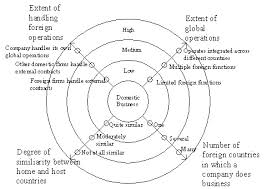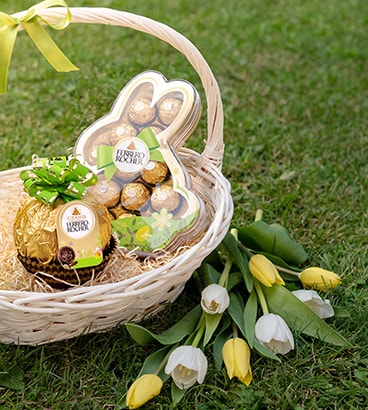The Beauty and Diversity of Culture
Culture is the essence of a society, the fabric that weaves together traditions, beliefs, values, art, and customs to create a unique identity. It is a reflection of our collective history and a celebration of our differences. From the way we dress to the food we eat, culture shapes every aspect of our lives.
Embracing Diversity
One of the most beautiful aspects of culture is its diversity. Each region, country, and community has its own distinct culture that is shaped by its history, geography, and people. By embracing diversity and learning about different cultures, we not only gain a deeper understanding of the world but also foster empathy and respect for others.
The Power of Tradition
Traditions are an integral part of culture, passed down from generation to generation as a way to preserve our heritage. Whether it’s celebrating festivals, performing rituals, or following customs, traditions connect us to our roots and provide a sense of belonging. They serve as a reminder of where we come from and help us navigate the complexities of modern life.
Cultural Exchange
Through cultural exchange, we have the opportunity to share our traditions with others and learn from different perspectives. Whether it’s through music, art, language, or cuisine, cultural exchange promotes mutual understanding and fosters connections across borders. It allows us to appreciate the richness of human creativity and innovation.
Preserving Culture for Future Generations
As the world becomes more interconnected, there is a growing need to preserve traditional cultures that are at risk of being lost. By supporting local artisans, promoting indigenous languages, and safeguarding cultural heritage sites, we can ensure that future generations inherit a world rich in diversity and heritage.
Celebrating Culture Every Day
Culture is not static; it evolves with time and adapts to changing circumstances. As individuals living in a globalized world, we have the power to celebrate culture every day through our actions and interactions. Whether it’s by trying new foods, learning a new language, or exploring different art forms, we can all contribute to preserving and promoting the beauty and diversity of culture.
Understanding Culture: Key Questions and Insights
- What is culture?
- How does culture influence society?
- What are the benefits of embracing cultural diversity?
- How do different cultures celebrate important events and festivals?
- Why is it important to preserve traditional cultural practices?
What is culture?
Culture encompasses the shared beliefs, traditions, customs, and values that define a particular group of people. It is the collective expression of a society’s identity, shaping everything from language and art to social norms and religious practices. Culture is dynamic and ever-evolving, influenced by historical events, geographical surroundings, and interactions with other cultures. It serves as a lens through which individuals perceive the world and guides their behaviors, interactions, and perceptions. Understanding culture is essential for fostering diversity, promoting mutual respect, and building bridges across communities.
How does culture influence society?
Culture plays a pivotal role in shaping society in myriad ways. It influences societal norms, values, behaviors, and interactions among individuals. From influencing the way people communicate to determining social hierarchies and power structures, culture permeates every aspect of society. Cultural beliefs and traditions guide societal practices, laws, and governance systems. Moreover, culture fosters a sense of identity and belonging among individuals, contributing to social cohesion and unity within communities. Ultimately, culture serves as a powerful force that shapes the collective consciousness and behavior of society as a whole.
What are the benefits of embracing cultural diversity?
Embracing cultural diversity brings a multitude of benefits to individuals and society as a whole. By welcoming different perspectives, traditions, and beliefs, we cultivate empathy, understanding, and respect for others. This acceptance of diversity fosters creativity and innovation, as exposure to varied viewpoints can inspire new ideas and solutions to complex problems. Additionally, embracing cultural diversity promotes inclusivity and social cohesion, building stronger communities where individuals feel valued and empowered. Ultimately, by embracing cultural diversity, we enrich our lives with a deeper appreciation for the richness of human experience and create a more harmonious and interconnected world.
How do different cultures celebrate important events and festivals?
Across the globe, diverse cultures celebrate important events and festivals in unique and vibrant ways that reflect their traditions and beliefs. From colorful parades to elaborate ceremonies, each culture infuses its celebrations with distinctive rituals and customs that have been passed down through generations. Whether it’s the lively dancing during Carnival in Brazil, the solemn rituals of Diwali in India, or the festive lantern lighting of Mid-Autumn Festival in China, these cultural celebrations serve as a time-honored way for communities to come together, express their identities, and commemorate significant moments in their history. The variety and richness of how different cultures mark these occasions highlight the beauty and depth of human creativity and heritage.
Why is it important to preserve traditional cultural practices?
Preserving traditional cultural practices is crucial for maintaining a sense of identity and heritage within a community. These practices are often deeply rooted in history and serve as a link to the past, providing valuable insights into the beliefs, values, and customs of previous generations. By safeguarding these traditions, we not only honor our ancestors but also pass down valuable knowledge and skills to future generations. Traditional cultural practices also foster a sense of belonging and cohesion among community members, creating a shared sense of pride and unity. Additionally, preserving these practices helps to prevent cultural erosion and ensures that diverse ways of life continue to thrive in an ever-changing world.




